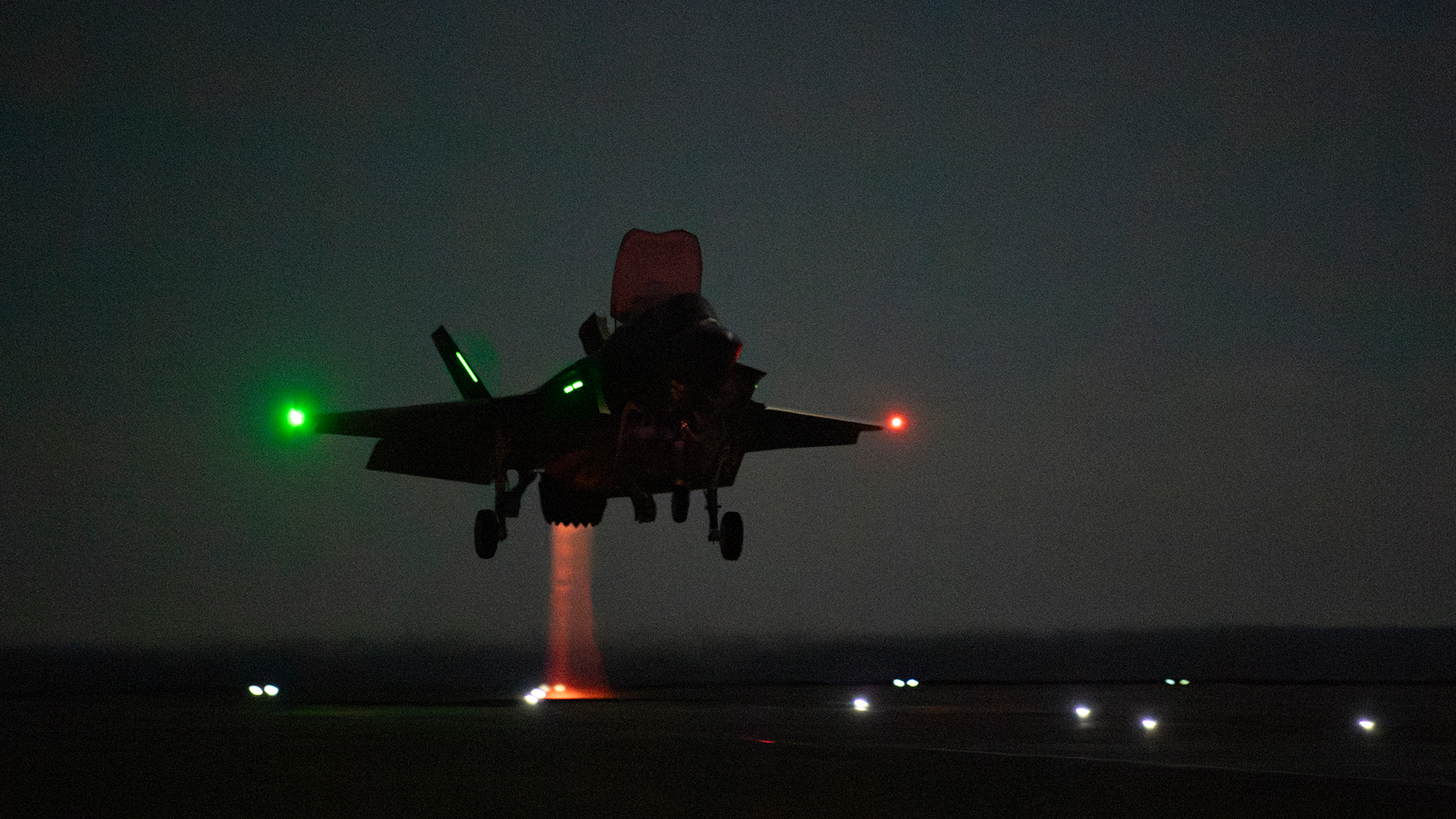
Quantifying success: The F-35 trials aboard HMS Prince of Wales in numbers

Britain's largest warship, HMS Prince of Wales, recently concluded a month of rigorous trials involving the F-35B Lightning stealth fighter off the east coast of the United States.
The aim was to develop ways of expanding carrier operation capabilities, focusing, among other things, on the F-35's launch and landing procedures in adverse weather conditions.
The trials were known as DT-3, Development Test, phase three, with phases one and two having been conducted aboard HMS Prince of Wales' sister ship, HMS Queen Elizabeth.
- HMS Prince of Wales completes F-35 testing off US east coast
- First F-35 shipborne rolling vertical landing to be made on HMS Prince of Wales
- Sunak gets taste of Navy life on HMS Diamond
DT-3 facilitated the collection of essential data regarding the F-35B's operational clearances, working towards a quicker turnaround for successive sorties.
How many jets were involved?
The trials involved two F35Bs - one of the world's most advanced warplanes.
The F-35s from the US-based Integrated Test Force were flown by US Marine Corps pilots, taking off from and landing on the flight deck of HMS Prince of Wales carrying different payloads, including a full load of dummy ordnance.
How many landings did the F-35s make?
- 60 shipborne rolling vertical landings, with 10 at night
- 20 backwards landings, 10 conducted at night
- Nearly 150 take-offs in various weather conditions and sea states
Commander Jamie Elliott, who planned and oversaw the trials, said all of the test take-offs "will inform any future decisions about F35-B operational clearance to take off and land heavier, operate in heavier sea states, and turn the jets around faster for more sorties".
How many personnel were involved?
A team of around 180 people supported the trials.
"I was proud of how the team collectively performed from day one," said Andrew Maack, a chief test engineer at Pax River, the US air base which is home to the F-35 Integrated Test Force.
"Team members recognised the value of our mission, appreciated the importance of this detachment and committed to the hard work to ensure we accomplished safe, secure and efficient flight test aboard the UK’s newest aircraft carrier."
How long were the trials?
The intensive trials lasted four weeks and involved training and data-gathering off the east coast of the United States.
"The last four weeks at sea have been the busiest HMS Prince of Wales has ever seen," said the commanding officer, Captain Richard Hewitt.
"The test points achieved will not only improve UK F-35B operations, but those of our F-35B programme partners and allies as well."
How long will it take to process the collected data?
It will take several months for experts on both sides of the Atlantic to analyse the data.
Significant volumes of data were gathered throughout the trials, prompting Capt Hewitt to note: "The past four weeks at sea have marked the most active period in the history of HMS Prince of Wales."
When will HMS Prince of Wales return home?
HMS Prince of Wales will continue additional aviation trials in the United States, which will involve training with the US Marine Corps and the exploration of unmanned aircraft integration.
The carrier will be returning to home shores before Christmas.









